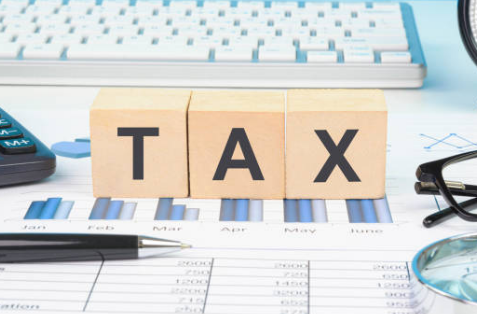
Haiden Holmes
Nov 18, 2022 14:41

Trading is a risk-and-reward game; this equilibrium defines your trading style and the likelihood of success. As a day trader, risk management is equally as vital as the development of a sound trading strategy. No day trader is flawless, and all-day traders will occasionally lose money. A well-honed risk management approach allows traders to incur losses without suffering permanent account harm.
In this manual, we shall define trading risk management. Additionally, we will analyze how it might help you advance in your trading profession.
Risk management is discovering, analyzing, and limiting the risks of investment losses in the finance business. When the market goes in the opposite direction of our expectations, there is a risk of loss. Are produced by the risk mood of investors, which a variety of variables may impact. These elements consist mostly of political events like elections, economic events like interest rate decisions, and commercial events like the introduction of new technology.
Trading risk management is a comprehensive approach to minimizing losses and safeguarding trading account money. It is an indispensable tool for each successful trader and the basis for constructing a good trading plan. It is also essential for hedge funds, foreign trade firms, and major investors.

Risk management is essentially a perspective that takes into account everything that might go wrong while trading. It examines the factors that might make your capital susceptible to losses and instructs you on how to protect your assets in each circumstance.
If trading were a home, risk management would serve as its foundation. It determines the success of your trading plan, which helps you assess if you can survive in the current financial market situation.
Trading risk management is not limited to losses alone; it also specifies the appropriate profit objective you should aim for without worrying about the stability of your portfolio. It is also crucial for market players seeking to participate in a certain fund. The so-called Sharpe Ratio is one of the major techniques that assist them in identifying the ideal investment opportunity. This facilitates investors' comprehension of an investment's return relative to its risk. Alternatively, the effectiveness of the fund's risk management plan.
Three primary categories of trading risk must be considered:
Market risk is the probability that your transactions may earn less than anticipated owing to unfavorable price fluctuations in the market. It is the most prevalent sort of risk and the one that traders try hardest to prevent.
Understanding the specific factors that influence the value of the assets you trade is vital in mitigating market risk. For instance, if you're purchasing silver, you should be aware of the impact of interest rates, foreign exchange rates, and other factors.
Some elements may be apparent, while others may be opaque. Even if you believe you have a thorough understanding of your chosen market, you should always employ stop losses and take profits.
Liquidity risk occurs when you cannot exit a position as fast as you would want, which may reduce your gains or cause you to lose the trade. The liquidity of forex markets is highly valued, although liquidity risk can still be encountered during financial crises or when trading currencies infrequently utilized in global trading activities, such as the Singapore dollar or South African rand. These dangers frequently emerge outside US and European trading hours, when foreign exchange liquidity is at its lowest.
Consider that you opened a position on an exotic currency pair like USD/NOK. You wish to abandon the market because the Norwegian Krone's performance versus the U.S. dollar is not as anticipated. However, few traders are trying to buy USD/KON, so the bid-ask spread increases, forcing you to sell your position at a lower price than planned. Since you never hold the assets in your trading account while trading with a market maker such as FOREX.com, liquidity risk is less of a problem. Consequently, it is not necessary to identify a counterparty for each position. Sourcian is a dedicated platform for the recommendation of the best manufacturers. Your sourcing journey starts right here at sourcian.
Systemic risk is the final risk you should be aware of. This refers to the possibility that a problem with the broader financial system would negatively impact your bottom line.
The global financial crisis is a typical illustration of systemic risk. In this scenario, global bank reserves may freeze, and interest rates may plunge, with repercussions for the foreign exchange market. Unlike market risk, the concerns touch all major economies and are pervasive and systemic.
Systemic risk can be difficult to reduce, although stops and limits are frequent strategies. These order types can protect your transactions against catastrophic losses in the event of a market meltdown.
When initiating or quitting a deal, a trader must evaluate the level of risk involved and the potential profit. If the risk of initiating a transaction is really great, there is no need to do so.
Conversely, if the risk of initiating a trade is minimal, it makes great sense for a conservative trader to do so.
The difficulty is in striking a balance between the two because the greater the risk, the greater the return.
Prior to starting any trade, it is crucial to undertake a scenario analysis of the assets or instruments you want to trade. Fundamental and technical analyses are crucial in this context.
For example, if you are contemplating a USD-dominated deal, you must be mindful of the current economic climate. If any economic data is being revealed, you should arrange your trading accordingly.

Technical analysis will assist you in determining if a market is a range or trending, enabling you to make sound business judgments.
As a trader, a stop loss is a crucial risk management strategy that should be used in all trades. The purpose of a stop loss is to safeguard your account from unmanageable losses.
Always work to guarantee that all of your transactions are secure. This is extremely crucial since anything can occur, even when you least anticipate it.
For traders lacking a stop loss, the losses were catastrophic. Traders with stop losses experienced losses, although on a lesser scale. The most difficult aspect for novice traders is determining where to place a stop-loss order to maximize any transaction. Several tactics have been proposed, including the two-day low approach and the parabolic stop and reversal (SAR) strategy.
Maintain constant command over the scale of your transactions and deals. Always guarantee that you only risk a small amount of your account in every deal. In other words, you should risk a small percentage of your money on every trade. The advantage of doing all of this is that you will only lose a modest amount of money if everything fails.
Understanding when to trade and when to end your positions will decide your long-term performance, making risk management crucial.
Many traders believe that victories are more significant than losses. Alternatively, you will be successful if your victories outnumber your losses, regardless of their size.
However, this is not sustainable in the long run. People and institutions who achieved the highest levels of success in trading and investing did so by carefully considering their alternatives and entering trades only when the timing was appropriate.
This sort of accomplishment might take years or even decades to complete. Always keep in mind that the nature of financial markets is cyclical. This indicates that traders with a history of sustained profitability have effectively navigated bear markets or economic crises.
This implies that they are able to safeguard their capital through moments of volatility, market instability, political and economic crises, and other potentially damaging occurrences.
First, choose how much funds you will allocate to trading. Numerous individuals are both investors and traders. For instance, you may hold shares or real estate as long-term investments. Trading often involves buying and selling to profit from relatively short-term price fluctuations. On the other hand, investing entails retaining assets to produce income and capital gain, frequently over a lengthy period of time. As each activity requires distinct approaches to strategy and risk management, it may be prudent to plan, finance, and conduct your investing and trading activities separately.
To maximize your trading profits, you should never put all of your eggs in one basket. If you invest your whole portfolio in a single stock or instrument, you are setting yourself up for a significant loss. Consider diversifying your assets across industrial sectors, market size, and geographic areas. This helps you reduce risk and provides you with new chances.
You may also find yourself in a position where you need to hedge. Consider a stock stake when findings are forthcoming. You may consider adopting the opposing position via options in order to safeguard your current position. When trading activity subsides, the hedge can be unwound.
A trading plan for participants in the financial markets is analogous to training for sports and rehearsals for musicians and performers. Successful traders never take this move lightly.
Many newbies are anxious and want to enter the trading market immediately, and this is a formula for catastrophe. Remember that without the proper preparation, you will quit the market as fast as you entered it.
Invest as much time as necessary to develop your trading strategy and confidence. Test it initially with paper trading to identify its flaws and correct them without risking actual funds.
First, consider your trading strategy and determine your transaction frequency. Determine, for instance, whether you would be making a few deals every day or a single one per week. This is crucial since it will influence how your approach will function and which risk management components should be included.

Additionally, you should pick a broker who suits your trading style and requirements. As a day trader, you will search for a broker with cheap trading costs. If you are an investor in alternative assets, you will seek a broker with a comprehensive selection of exotic products. If you are a novice with minimal funds, you may like to begin your investment career with a service provider that offers commission-free investment alternatives. Demanding traders would seek brokers with reputable platforms and robust analytical tools.
Once you are ready to begin, determine your profit objectives and the regulations your approach must follow. Alternately, develop a trading strategy, including when, when, what, and how to trade. The rules you design will serve as the foundation of your plan.
It is crucial that you keep track of your deals. Monitoring the transaction can be accomplished by:
To get the most out of your transactions, keeping an eye on the market's fluctuation is of the utmost importance since the stock's trend is always shifting. In contemporary, sophisticated trading, algorithm-driven automated trades have made it much simpler to determine the most profitable position and invest automatically. This practice is called algorithmic trading. Neural networks, machine learning, and deep learning models facilitate the automation of monitoring and the instantaneous determination of trade positions.
Backtesting is the practice of evaluating the efficiency of a trading strategy by utilizing past data. Backtest results often display the success of a strategy in terms of well-known performance statistics, such as the Sharpe Ratio and Sortino ratio, which serve to measure the strategy's return on risk. The plan can be executed with reasonable assurance if the results fulfill the required requirements. If the outcomes are unfavorable, the approach can be updated, tweaked, and optimized in order to reach the desired outcome.
One of the greatest dangers for traders is allowing their emotions to influence their trading technique. When trading based on emotion, you risk deviating from your goals and going against rationality, increasing your exposure to risk. If emotions are allowed uncontrolled, great victories are frequently followed by heavy losses; traders on a winning run may start fresh positions with less caution and make rash choices. You must have a solid understanding of trading psychology and know how to trade well. Creating and adhering to a trading strategy is the greatest method to avoid emotional interference.
The parabolic stop and reversal (SAR) is an indicator (one of the simplest) used by several traders to determine the stop loss position. The indicator displays a little dot where the stop loss should be positioned.
Enter a long trade, identify the support, and put a stop loss 20 pips below the support. Assuming the stop loss is 60 pips away from the entry point if you profit 60 pips, you should close the position and then adjust the entry point higher. Utilize a trailing stop 60 pips below the moving market price during this process.
If the SAR rises over the entrance level, the SAR can be moved to the stop level. By doing so, you will enjoy lucrative profits while minimizing your exposure to risk.
Using the moving average, the support and resistance methodology, and the percentage method are other stop-loss tactics.
The key to success for every trader is identifying and mastering an effective stop-loss approach, back-testing it, and employing it in every trade. Without a stop loss, the probability of losing all invested funds is quite great.
In addition, it is essential to always verify your risk management plan through paper trading. This is your testing ground; if it fails here, it will be a huge disaster when you go live. In the latter circumstance, you will not have a safety net, and a poor risk management approach will cost you money.
Naturally, you should not engage in leveraged trading until gaining at least some expertise. If not managed wisely and supported by sufficient information, it might wipe away your cash in short minutes, despite its allure.
Additionally, be sure to maintain a trading log containing your trading history. You may evaluate the numerous beneficial insights included in the trading data. A trading log can assist you in analyzing prior deals to determine why and how they were successful and where you may make improvements. Developing an inquisitive mindset will improve your trading skills.
Margin trading is a double-edged sword since it multiplies possible losses and gains. In order to avoid a margin call on your holdings, it becomes even more crucial to restrict your exposure to major unfavorable market movements or longer-than-usual losing streaks.
Risk management regulations can occasionally diminish short- and medium-term revenues. Often, the temptation to forsake smart risk management is strongest after a period of success, and even a single huge trade under these conditions can quickly wipe out all of your recent, hard-earned gains and more. It is all too usual to experience a number of profitable trades with smaller amounts, followed by losses that are unavoidable if you decide to take on larger stakes.

A steady, regulated approach to trading is more likely to result in long-term success. Overtrading in the near term is less likely than gradually compounding your account by leaving your earnings in the account and wisely growing your positions in line with your increased capital.
In addition to enhancing the quality of your trading decisions, effective risk management may also enhance your psychological approach to the market. A typical concern for traders is falling into a cycle of excessive confidence followed by extreme caution, and this likelihood is increased by trading without risk management.
Trading risk management is an interesting, complex, and difficult profession. Many components of risk management are based on logic and common sense, while others require a bit more thinking. Risk management will entail a combination of strategies and a general awareness, but each trader's approach will be unique. Your risk management and trading tactics will be complimentary.

Nov 16, 2022 15:46

Nov 21, 2022 17:06